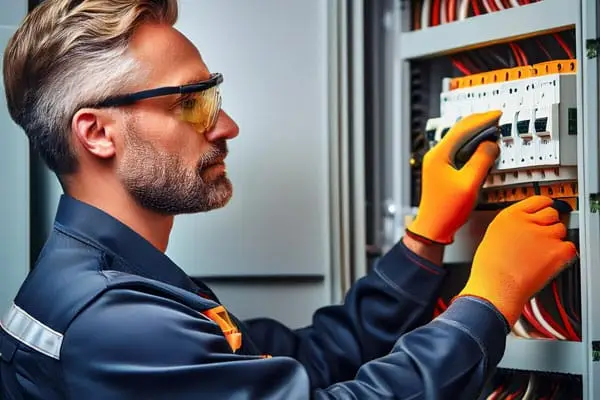An electrical inspection is a vital process for ensuring your home or business’s electrical system is safe, efficient, and up to code. Whether you’re buying a new property, planning renovations, or addressing concerns with your current setup, understanding what happens during an electrical inspection can help you prepare and get the most out of the process. Here’s a breakdown of what to expect.
Why Get an Electrical Inspection?
Electrical inspections are conducted to assess the safety and functionality of your electrical system. They help identify potential hazards, such as outdated wiring or overloaded circuits, that could lead to fires, electrical shocks, or costly repairs. Inspections are also necessary to comply with local electrical codes and ensure your system can handle modern electrical demands.
Steps Involved in an Electrical Inspection
- Initial Assessment
The electrician will start by reviewing your property’s electrical history, if available. They’ll ask about any issues you’ve noticed, such as flickering lights, tripped breakers, or outlets that don’t work. Sharing this information can help them focus on specific areas during the inspection. - Examining the Electrical Panel
The electrical panel is the heart of your system, so the inspector will check it thoroughly. They’ll look for signs of wear, corrosion, or improper wiring. The panel’s capacity will be evaluated to ensure it can handle your home’s electrical load, especially if you’ve added appliances or devices over time. - Testing Outlets and Switches
All outlets and switches will be inspected to ensure they’re functioning correctly. The electrician will test for proper grounding and check for signs of damage, such as discoloration or loose connections. In areas with moisture, like kitchens and bathrooms, they’ll confirm that Ground Fault Circuit Interrupters (GFCIs) are installed and working as required. - Inspecting Wiring and Connections
The wiring behind walls, in attics, or within crawl spaces will be assessed to detect any signs of aging, fraying, or improper installation. They’ll also ensure the wiring type matches current safety standards, as older homes may still have aluminum wiring or knob-and-tube systems that need updating. - Assessing Safety Devices
The inspector will verify that smoke detectors, carbon monoxide detectors, and surge protectors are installed and functioning properly. - Providing Recommendations
At the end of the inspection, the electrician will provide a detailed report highlighting any issues they found and recommendations for repairs or upgrades. They’ll prioritize critical safety concerns and suggest improvements for efficiency and compliance.
Preparing for an Inspection
To prepare, ensure the electrician has access to your electrical panel, outlets, and key areas of your home. Clear away furniture or obstacles and gather any questions you have about your system.
By understanding what to expect during an electrical inspection, you can ensure your property is safe, functional, and ready to meet your electrical needs. Regular inspections are an investment in your peace of mind and the longevity of your electrical system.

